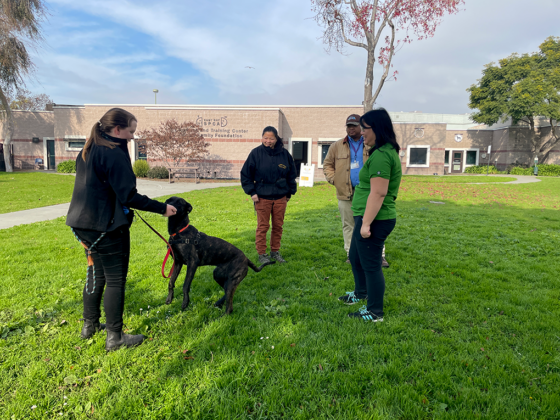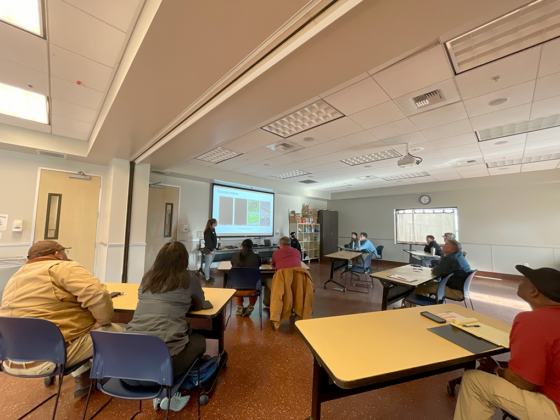Behavior & Training Pilot Program: Advancing Animal Awareness
As part of an effort that our Behavior & Training (B&T) staff are undertaking, we were pleased to launch the pilot program called Advancing Animal Awareness. Our intention is to provide tools to groups that might not be involved with animals in the traditional avenues we think of but encounter them in their line of work. For example, when we think about a nurse offering medicines to un-housed individuals, we do not always consider the risk factors of unknown dog encounters. By creating this resource for professionals, we can ensure their safety, the animal’s safety, and an overall better outcome.

Alameda County Vector Control Biologists recently joined us at our Oakland campus to learn from our Behavior & Training team about effective techniques for safely interacting with animals while out in the field. This group plays a vital role in the community, overseeing wildlife health and rodent control. As part of their work, they are called to take samples from private properties and often encounter client’s personal pets as well as stray animals during their work.
The goal of our seminar is to provide insight into dog body language that officers can use when on site to assess risk during interactions. After the lecture portion, we set up three interactive stations where teams rotated to engage with dogs displaying a range of dispositions, allowing officers to explore the practical skills outlined in the seminar in a controlled environment.

In the video below, our Behavior & Training Manager, Kate, is hanging out with Australian Shepherd mix, Teddy, inside the play area while our guests observe his body language. He’s barking, scampering, and definitely aware that there are visitors. To an untrained eye, it can be difficult to determine if this is a dog that’s just an enthusiastic greeter or an anxious dog that will be uncomfortable with strangers entering his space. After sharing observations on subtle dog body language, Kate also poses as the owner that doesn’t want to leash her dog, allowing some role-play where participants were faced with the task of advocating for themselves, their coworkers, and the animals on-site based on the body language they observe. Even a seemingly friendly dog can be startled by a new visitor or drastic break in routine. By learning how dogs communicate, participants can identify what safety measures to implement in order to keep themselves and the animals safe and secure!
Questions?
If you’re curious to find out more about this program and all that we can facilitate with group training sessions, contact our Behavior & Training department for more information.
